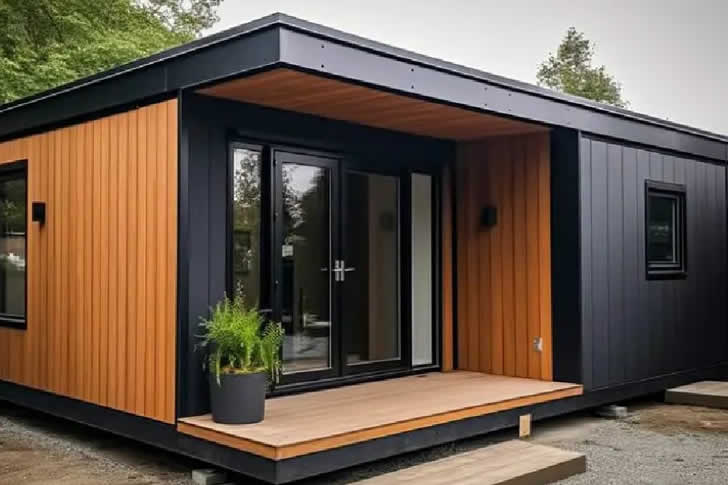Perfect for Seniors! How to Choose Affordable and Secure Prefabricated Homes
As seniors consider downsizing or relocating, prefabricated homes offer an attractive option. These homes are often affordable, secure, and customizable to fit individual needs. This article explores how seniors can choose the best prefabricated homes, including price ranges and key features to consider.

Benefits of Prefabricated Homes for Seniors
- Affordability: Prefab homes are typically more cost-effective than traditional homes, making them a viable option for seniors on a fixed income.
- Customization: Many manufacturers allow for customization, ensuring that the home meets specific accessibility needs.
- Energy Efficiency: Prefab homes often come with modern energy-efficient features that help reduce utility costs.
- Quick Construction: These homes can be built in a fraction of the time of traditional homes, allowing for faster occupancy.
Key Features to Look For
When selecting a prefabricated home, consider the following features:
- Accessibility: Look for single-story designs or homes with ramps and wide doorways for wheelchair accessibility.
- Security Features: Ensure the home includes secure locks, smoke detectors, and possibly an alarm system.
- Low Maintenance: Choose materials and designs that require minimal upkeep.
- Location: Consider proximity to healthcare facilities, shopping, and community centers.
Frequently Asked Questions (FAQ)
1. Are prefabricated homes safe and durable?
Yes, prefabricated homes are built to meet strict building codes and are designed to be durable and safe. Manufacturers often use high-quality materials and advanced construction techniques, ensuring that these homes can withstand various weather conditions. Many prefabricated homes come with warranties that cover structural integrity, providing peace of mind for homeowners. Additionally, many prefabricated homes can be customized to enhance safety features, such as installing handrails and anti-slip flooring.
2. How much do prefabricated homes cost?
The cost of prefabricated homes can vary significantly based on factors such as location, size, and customization options. Generally, in New Zealand, you can find models ranging from $100,000 to $300,000. Smaller homes, like those around 60 square meters, tend to be more affordable, making them ideal for seniors. It’s important to consider additional costs, such as land preparation, utility connections, and any site-specific requirements, which can impact the overall price.
3. What financing options are available for seniors?
Seniors have several financing options when purchasing a prefabricated home. Traditional mortgages are available, but some seniors may also qualify for personal loans, government grants, or special financing programs designed for senior citizens. Additionally, many manufacturers offer financing plans that make it easier for seniors to purchase their homes. Consulting with a financial advisor can help seniors navigate these options and find the best solution for their situation.
Professional Analysis
Prefabricated homes have become increasingly popular among seniors due to their affordability and practicality. Here are some insights into the market trends:
- Rising Demand: The aging population is driving demand for smaller, more manageable living spaces that can accommodate changing health needs.
- Cost Comparison: Compared to traditional homes, prefabricated options can save seniors up to 30% on housing costs.
- Market Growth: The prefab housing market in New Zealand is expected to grow by 5% annually, reflecting a shift towards more sustainable and efficient building methods.
Price Table for Prefabricated Homes in New Zealand
| Region | Size (sqm) | Price Range (NZD) | Key Features | Affordability Index |
|---|---|---|---|---|
| Auckland | 60 | 15,000 – 20,000 | Modern design, Energy-efficient | 7 |
| Wellington | 70 | 17,000 – 22,000 | Customizable, Low maintenance | 6 |
| Christchurch | 60 | 14,000 – 19,000 | Accessibility features | 8 |
| Hamilton | 80 | 20,000 – 25,000 | Eco-friendly materials | 5 |
| Dunedin | 100 | 25,000 – 30,000 | Spacious layout | 4 |
| Tauranga | 70 | 18,000 – 23,000 | Outdoor space | 6 |
| Napier | 60 | 14,000 – 19,000 | Easy access | 8 |
| Palmerston North | 80 | 21,000 – 26,000 | Modern kitchen | 5 |
| Rotorua | 60 | 13,000 – 18,000 | Energy-efficient | 9 |
| New Plymouth | 90 | 20,000 – 25,000 | Flexible layouts | 5 |
Note: The affordability index is based on the ratio of average household income to the home price, where a lower index indicates better affordability.
Conclusion
Choosing a prefabricated home can be a practical and affordable solution for seniors looking to downsize. By considering key features and understanding pricing dynamics, seniors can find a home that suits their lifestyle and budget. With careful planning and research, the perfect prefabricated home is within reach.
Sources
This article aims to provide a comprehensive guide for seniors considering prefabricated homes, ensuring they can make informed decisions for their future living arrangements.







Recent Comments